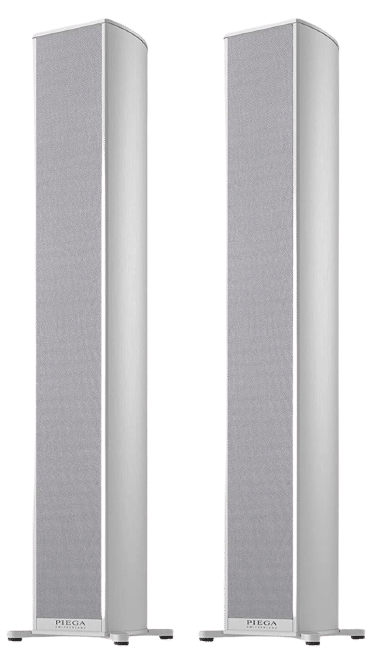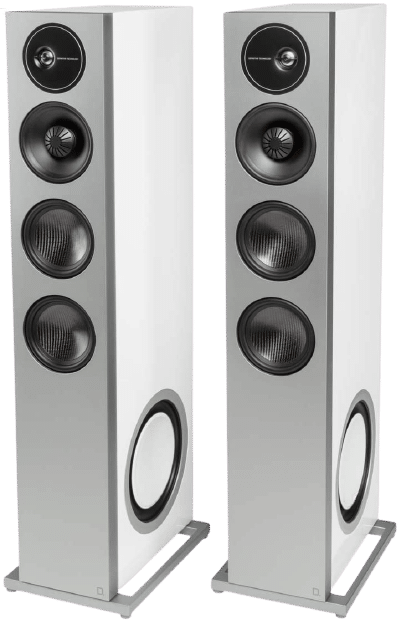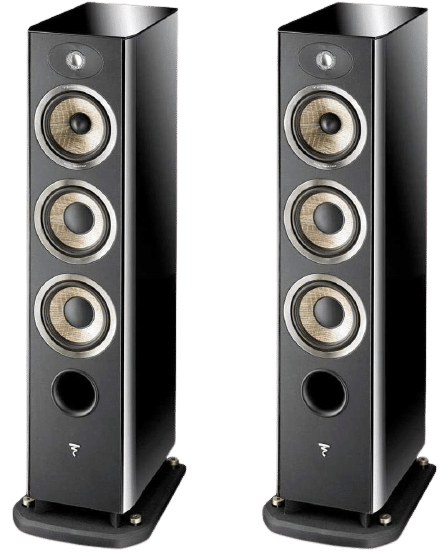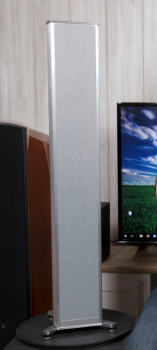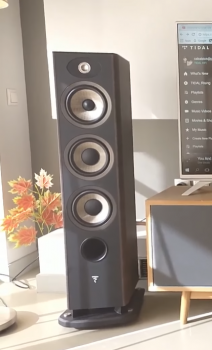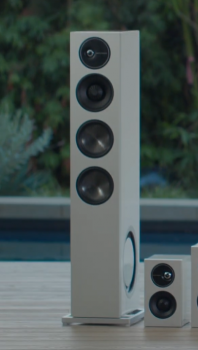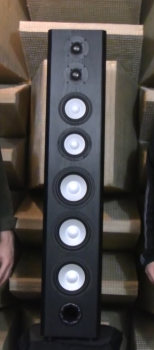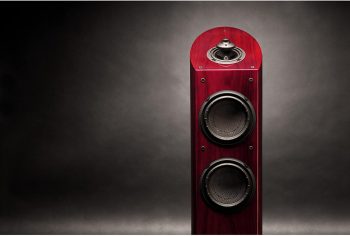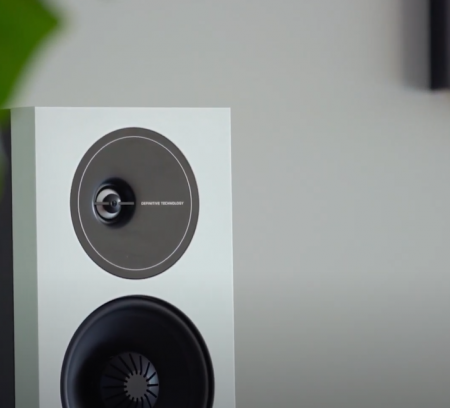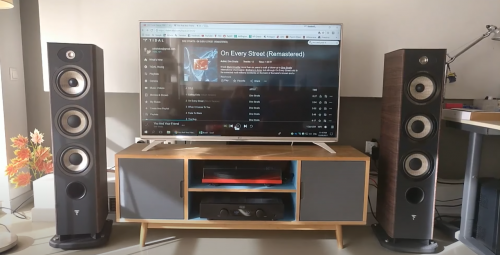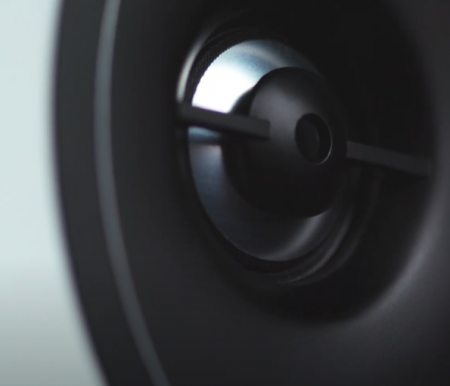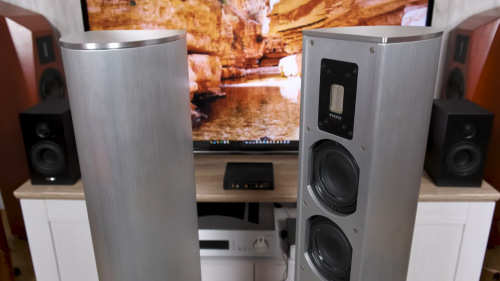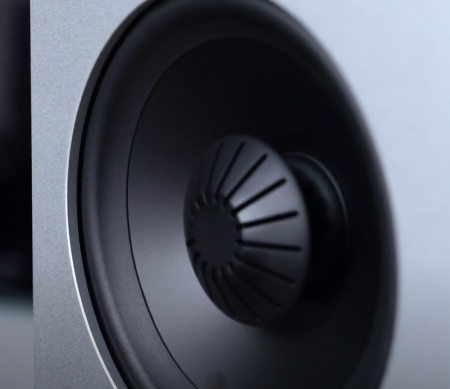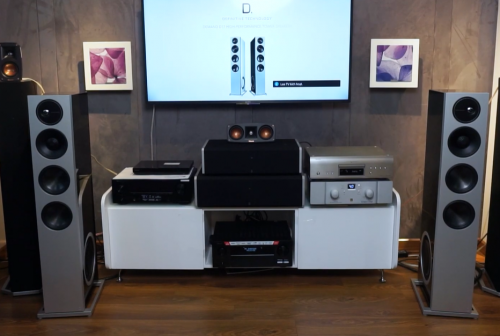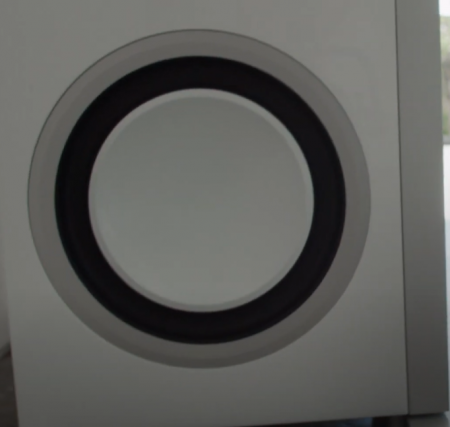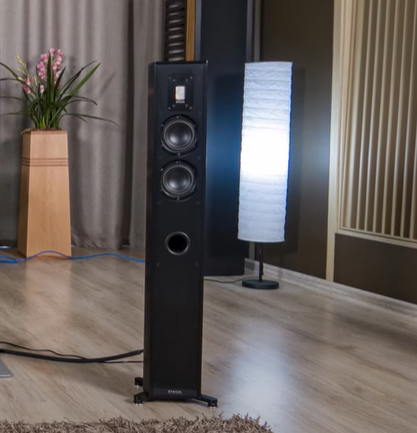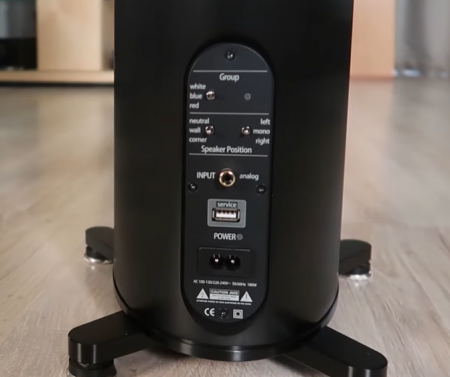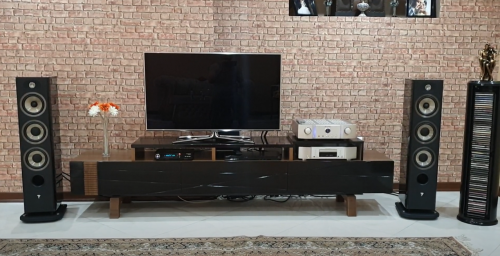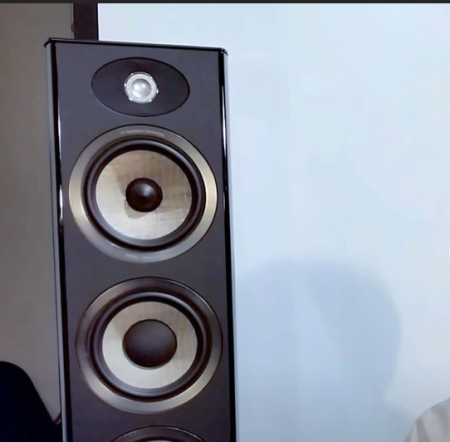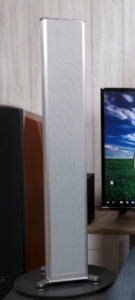A floorstanding speaker is unmatched in bringing resounding audio to your home. But that won’t be the case if you don’t know how to pick them. To save time and money, you can avoid this by following our experts’ guide on the best floor standing speakers under 5000.
Reviews of the Best Floor Standing Speakers Under 5000
1. Piega Premium 501 Wireless Floor-Standing Speakers
The Piega Premium 501 has an understated design that will fit seamlessly into your living room. The high quality build is finished with either white lacquer or white aluminum.
The soundbar is securely constructed with aluminum, the ideal material for speakers due to its heat dispersion abilities, acoustic properties, and an overall elegant look.
Made in Switzerland, the speakers were designed to balance the sound of low and high frequencies even better. The speakers are packed with an LDR ribbon tweeter that produces realistic spatial detailed sound and two low to midrange drivers that handle the middle and bass tones. Indeed, one of the best floor standing speakers under $5000.
What We Like
- Beautifully designed
- LDR ribbon tweeter
- Balanced mid and low ranges
- Comes with floor protectors
- Loud volume
- Minimal distortion
- Swiss made and designed
- Multi-connections
- 2 colors available
What We Don't Like
- Can be heavy
- Sharp floor protector pegs
2. Focal Aria 926 3-Way Bass Reflex Floor Standing Speakers
If you’re looking for resounding powerful bass, look no further than the 3-way bass reflex Focal Aria 926 speaker. The new flax cones afford another level of durability and flexibility when the audio frequencies come through. Meanwhile, the TNF tweeter handles high-frequency response with supreme accuracy.
Another best floor standing speaker under $5000, the Focal Aria tower speaker come in two different finishes — walnut and black high gloss. It doesn’t matter if you decide to go with rustic or elegant, these speakers will fit into your home nicely.
To further guarantee the reliability of these 3-way bass reflex speakers, Focal also provides a one-year warranty. The warranty makes this a risk-free purchase that can bring your music to life.
What We Like
- Two finishes
- One TNF tweeter
- One new flax cone
- One year warranty
- Two 6.5 drivers
- Reliable midrange compression driver
- Reduces distortion
- Inverted soft dome tweeter
What We Don't Like
- Heavy
- Non-swivel
3. Definitive Technology D17 Demand Series Modern High-Performance 3-Way Tower Speaker
With these best floor standing speakers under $5000 mark, your sound stage will be expanded with balanced low and high frequencies low-end speakers cannot provide. These high end speakers feature two 6.5 inch carbon drivers with another 6.5 woofer will promise full-range music you’re going to love.
The magnetic grilles of the D17 tower speaker can serve as protection for the cones without affecting the audio. They can also be removed easily if you want to enjoy an unencumbered and great sound.
The design of these tower speakers is minimalistic and highly luxurious with an almost mirror-like finish. Once the equally elegant center channel is added, you will have the full home theater experience with this buildable sound system.
What We Like
- Capable of room-filling sound
- Two 6.5 drivers
- One 6.5 woofer
- Comes with metal grille protection
- Minimalist design
- Buildable system
- Balanced low and high frequency response
What We Don't Like
- Bass could require adjustments
- No wood finishes
4. Axiom M100 Floorstanding Speaker
With over 30 years of audio experience, the Axion M100 proves that its success is well-deserved by producing the most balanced and precise high quality sound. With these standing speakers under $5000, you will hear exceptional highs, clear mids and rich lows. The amazing M100 features 3 woofers, 2 midrange drivers and double tweeters to ensure you hear everything.
The Axion M100 has a power handling of up to 400W and comes in two different finishes — a black oak and a Boston cherry.
Ideal for mid to larger rooms, the M100 has a long and wide reach to create an all-encompassing soundstage. It even comes with an elevated floor protector section to prevent damage to your flooring.
What We Like
- 2 finishes
- Power handling of up to 400W
- Balanced and precise sound
- Comes with a floor protector
- 3 woofers
- 2 mid drivers
- 2 tweeters
What We Don't Like
- Sharp floor protector pegs
- Very contrasting colors
5. Mirage OMD-28 Rosewood 2.5-Way OMNIPOLAR Floor Standing Speaker
The Mirage OMD-28 is the most affordable option on our list. The lower price range does not compromise the quality of sound production. It’s a full ranging loudspeaker that is capable of surround stereo sound.
It has a unique feature called Voice Matching, which can automatically connect it to Mirage’s other devices including bookshelf or satellite loudspeakers to create a full music system. It also has an Omnipolar acoustic suspension center speaker.
Furnished with OmniPolar technology, the Mirage OMD-28 can pump out sound in a spherical shape, which targets the sweet listening spot. This is known as the best position to take in every sound — the focal point between two loudspeakers.
What We Like
- Equipped with OmniPolar Technology
- Voice Matching
- Affordable price point
- Surround sound capable
- 2 drivers one in a sealed and one in a ported cabinet
- Elegant colorful cabinet
What We Don't Like
- Only one speaker for the price
- No other color options
Floor Standing Speaker Under 5000 Buyer’s Guide
Lastly, we have the sensitivity. The sensitivity is measured in decibels (dB) and refers to how well the speaker can translate power into sound. The lower the sensitivity is, the more ineffective the loudspeakers are for sound quality.
You would expect high-end set of speakers to have higher sensitivity, and while that is mostly the case, you can still experience better sound from more budget speakers. In general, look for floorstanding speaker with at least 88 dB to 90dB like the Polk Audio DB691 for exceptional sound quality.
The best floor standing speakers won’t only look nice, but will completely change how the sound is received and reproduced. One thing is for sure, they are a crucial part of an effective audio system and will make the sound great. To give you a leg up in the process, our professional team has come up with a definitive guide.
Overall Design and Look
There are a few aspects to consider when looking at the exterior of your new pair of speakers.
The first and perhaps most important part of the design is the size of the speakers. When you like these speakers standing in your living room, you will realize just how much space they can take up. Measure the amount of space you have to spare and make sure the dimensions of the tower speakers are compatible.
In general, the larger the speakers, the louder the sound. But don’t purchase the biggest speakers under 5000 you can find only to realize they don’t fit! The size isn’t the only factor that affects the clear sound stage, but more on that in a bit.
Many higher end tower comes with different aesthetics and finishes. High gloss is a very popular look that will fit in nicely any interior. However, they are more prominent in the higher price range.
Wood finishes are also quite popular and have a woodsy and rustic look that will match hardwood floors. This option can mostly be found in the mid to high price range speakers either from Polk Audio or Klipsch RP speakers. When you’re looking for the perfect design, don’t forget about your interiors. A tower speakers is a heavy piece of technology and could potentially damage luxurious wood floors and put permanent imprints in your carpet. You may try to get carpet spikes to hold them firmly in place. This is when our experts really like to suggest looking at floor protectors and standing feet, which many tower speakers offer.
The next part of the overall look and design pertains to the build quality of the product. The construction of the cabinet should be sturdy and durable, with heat dispersing and anti-resonant materials. A good example of this would be aluminum.
Examine the construction of the components and how they fit together. Your floor speaker should feel like very sturdy without loose parts to allow any vibrations to produce distortions or clear great sound without variations of any kind.
Specs
The specifications of floor standing speaker can take a lot of time to understand. Our experts have laid out common specifications in this section with each part explained in further detail below.
First up is the frequency range and bass response of the floorstanding speaker. The human ear can discern the audio range between 20 Hz to 20 kHz. In practice, set of speakers produce frequencies that span that range will be the most ideal.
Measured in ohms, the impedance of a floor speaker basically refers to the load the speaker can handle from the amplifier. Common impedance figures you will find are 4, 8, and 12 ohms. If you have a passive speaker, it’s important to pay close attention to the impedance as mismatched values can damage your equipment.
Audio Performance
The audio performance of your new floorstanding speakers hinges on its hardware, and more importantly, on the drivers [1]. The drivers are the parts of the speaker that are responsible for producing sound with vibrations. High-end frequencies have short sound waves, and the drivers that produce them can be smaller. However, low-end frequencies include long sound waves, which call for considerably bigger drivers.There are 4 different types of drivers that are imperative to audio performance.
- Tweeter
The tweeter was appropriately named after the high-pitched sounds a bird makes. Since they tackle the high frequencies, they also sit at the top of your speakers. Within this broad category, there are more distinctive types of tweeters.
A horn technology tweeter excels in precision. Its most coveted capability is to relay a dynamic audio frequency range as it is highly sensitive. However, it could improve the distortion part of its sound production.
When paired with the Klipsch Tractrix Horn–loaded LTS tweeter, it provides class–leading speaker efficiency.
We also have a cone tweeter. They come in different materials but our experts suggest looking for metal cones over paper or fabric simply for the longevity and durability factor.
Dome tweeter is the largest option, and therefore the loudest. For example, the titanium-dome tweeter in Klipsch RP-280FA creates an impressive soundstage when listening to music and can reach a far greater distance than its smaller counterparts. Dome tweeter is also the most robust, made out of materials such as polymer and other metals.
- Mid-Range Drivers
As the name suggests, a midrange driver handles the audio frequency range between 500 to 2000 Hz, which also encompasses the range in which human voice and instrument fall. For this reason, locating a high-performing midrange driver is extremely important. You can find midrange driver that are used as part of a speaker that also includes a woofer and a tweeter.
- Woofer
Like the tweeter, a woofer is named after an animal sound as well — a dog’s woof. As you can guess, the woofer is responsible for portraying the low-end frequencies you’re going to want if you love bass since it delivers high- end quality bass response. The woofers are an indispensable part of the floorstanding speakers for resonating bass tones.
Some set of speakers such as Klipsch RP-8060 FA Dolby Atmos use Cerametallic Woofers that makes the sound exceptionally rich.
- Subwoofer
What is the difference between a woofer and a subwoofer? The subwoofer handles even lower tones than the woofer, which is around 20 Hz to 200 Hz. This frequency range may be difficult to hear with human ears, but it’s the subwoofer’s job to amplify it for us.
Some products like the Klipsch RP-280FA includes RP-450C center speaker, two ceramic/metal 8-inch subwoofers, with Atmos-enabled elevation drivers to create a reflective ceiling sound effect.
Just like the new speaker in the Klipsch RP or Reference Premiere Series. “Reference Premiere” is a line that holds the top spot with regards to home theater and other occasions that require an enormously powerful stand speaker.
Power Rating
The power rating of a tower speakers refers to how much power output it’s capable of. The power rating is indicated in watts, and are split into two categories — RMS and peak power.
The peak power rating can be a little misleading. The peak power is by no means the optimal functioning range, because it actually only refers to the highest power output your speaker can handle in short bursts. If you were to play it at this level continuously, you risk blowing them out.
The RMS is an important indication of the best speakers. It’s also the one that refers to the stable power output your loudspeakers are capable of without any damage. This makes it the more important power rating to consider in terms of sound quality at low or high volumes.
Horn-driven speakers, such as the Klipsch RP-8060 FA Dolby Atmos speaker, are much more efficient than their counterparts and require less power to create the sound great.
Range of Frequency Response
The frequency response range refers to the audio range the speakers can process — in other words, how high and low frequency the sound can be. In general, the wider this range is, the better your home theater system will sound.
However, since the human ear is only capable of deciphering audio in the 20 Hz to kHz range, anything beyond that is considered a bonus and more so for sensitivity and accuracy.
You won’t be able to hear notes produced beyond our audible range, but that doesn’t mean you won’t be able to feel it. Our experts say the wide range can be felt through more resounding bass, and higher precision in the sound quality.
Sensitivity
The sensitivity of floorstanding speakers are in direct correlation with the low and high volumes. It measures how well your speakers can convert power into sound, and is measured in dB.
If you want an efficient and loud speaker, the sensitivity is the rating to pay attention to. If all other categories put 2 speakers neck and neck, the difference in sensitivity is louder than the other.
To guarantee the top notch sound quality, set of speakers best for long range and room with sound won’t have sensitivity dipping below 90 dB.
Connectivity & Flexibility
Modern-day speakers that feature Bluetooth are no longer a rarity, but are considered the norm. Bluetooth connectivity will allow you to stream content wirelessly and even set up the speakers without cables running along the ground. This will result in a much cleaner setup.
The convenience may come at the cost of reliability. A wired connection will be much stabler and stronger in general, but this isn’t always the case. Our experts do not advise keeping the speakers too far from the TV to ensure a more consistent connection.
The connection method of floorstanding speakers could limit the placement. For example, a wired setup will only allow you to place the speaker as far as the cable can reach. But since a Bluetooth connection is wireless, you can place it anywhere within 30 ft and still enjoy a clutter-free and reliable setup.
Price & Warranty
Since you are looking at loudspeakers at five thousand, which is not a slight number, there will be some expectations. To ensure the speaker is up to standard, it should check most, if not all, of the boxes above. To satisfy different budget ranges, our experts have come up with some premium options and ones on the lower end.
For such a pricey investment, be sure your speaker comes with a warranty. Most manufacturers include a one-year warranty, but we have also seen ones that extend to 5 and even 10 years! The length of the warranty is a good gauge as to how dependable the speakers are.
If the speakers are of exceptional quality, then there is more confidence on the part of the manufacturers in covering potential issues.
Passive vs Powered FloorStanding Speakers
The difference between passive versus powered speakers is quite simple — one has a built-in amplifier and one does not. Powered speakers, also known as active speakers, don’t need an external amplifier because they have it built-in. A passive speaker is one that requires an external amp.
The most common are passive speakers and this is the type we see in most home theaters. A passive speaker is also sought after for those who want to customize and build their own system. It will afford you the flexibility to customize bass levels to produce music that suits your preference.
A passive speaker like the KEF Q750 floorstanding speaker is also lighter than an active one because of the lack of an amplifier. It does make it more complicated when setting up your music system, because you need to be sure that the impedance is compatible.
An active speaker, on the other hand, comes with everything you need already embedded without you having to figure out a compatible amp. They are the easiest plug and play option without needing any customization on your part. However, they can be larger and much heavier due to the extra feature and would require more space in some cases.
4-Way vs 3-Way vs 2-Way Floor Standing Speakers
There are multiple types of floorstanding loudspeakers. You may have noticed 2, 3, or 4-way in the name of many of the products. These numbers refer to the number of speakers a floorstanding speaker has. The more speakers, the better, with 4-way being the best.
A two way (2-way) such as the 8-ohm Klipsch RF 7 II is a speaker that has just a tweeter and a woofer for high and low tones. The mid-range frequencies are balanced by both the tweeter and woofer to make up the difference. As you can imagine, this provides lower sound quality and much less accuracy than a full-range four way speaker.
Then we have a three way (3-way speaker). 3-way bass reflex speakers have the tweeter and woofer plus a dedicated center channel for the mid-ranges. Between a 3-way and 2-way speaker, 3-way speakers can produce much more accurate mid-ranges than the 2-way and is able to relay most sounds in the spectrum. This means clear highs, mids and bass.
Lastly, the 4-way speaker is the type that possesses all the channels in the previous two options plus super tweeters. This is what the speaker uses to portray extra high frequencies without any distortion and without losing any of the precision.
For audio and cinephiles that are picky with the bass and accuracy of the speaker performance, our experts suggest going for at least a 3-way option, or a 4-way if possible.
How to Properly and Effectively Use a FloorStanding Speaker
Let’s say you have narrowed down the product perfect for your setup. Its performance can still be greatly affected by minute details such as the placement and angles. Our experts have tested speakers in different sized rooms with different furnishings to come up with some general rules.
First, always be sure that the speakers are placed facing the length of the room. This will create a clear path for the audio flow. When placed in an elongated room, it also allows the sound to travel along the walls for a wider soundstage.
When considering your viewing location, the center of the room is your safest bet. It will be the focal point of the speakers if you angle it correctly and provide enough space between the walls to place a speaker on either side.
Similar to your line of sight, your line of hearing should be unobstructed. Make sure not to interrupt the sound by placing anything between the speakers and your viewing spot. In fact, keep the entire area in front of your entertainment system free of clutter.
Also keep in mind that the type of flooring and furniture you have in the room can affect the sound. With large sofas, long curtains and carpeting, you could experience a more muted and dampened sound than you would compared to the same system in a room with tiled or hardwood floors and hardly any furniture.
Members of our audio team have seen people place their loudspeakers directly against the wall, which is not advisable since that can also affect the sound quality for your movies and music. It is recommended to keep a distance of at least 6-10 inches away from the wall to give the audio enough space to fully take advantage of the acoustics.
As a final tip, our audio professionals advise angling the speakers anywhere from 30-45 degrees towards your listening spot for the most favorable sound for your movies and music. The key to enjoying the ultimate sound listening experience requires you to find the “sweet spot”. This is the precise focal point between two loudspeakers where the sound is relayed in its most accurate and clear form.
FAQ
Do you need a sub with floorstanding speakers?
No, you do not need a sub with floorstanding speakers. This is because best floor standing speakers should have a subwoofer or woofer already built-in. For audio and cinephiles who crave richer bass for their music, an external sub can be added for more effect.
Are floorstanding speakers better than bookshelf speakers?
Yes, floorstanding speakers such as Q Acoustics are better than bookshelf speakers such as SVS Prime Pinnacle. In general, floorstanding speakers are much more powerful, provide wider sound, and take up less lateral space.
What level of audio quality can I expect from $5000 speakers?
The level of audio quality you can expect from $5000 price range speakers would be accurate sound, deep bass, elevated music, and distinguished frequencies, among others.
Our Top Pick For a Floor Standing Speakers Under $5000:
Piega Premium 501 Wireless Floor-Standing Speakers
The Piega Premium 501 wireless floor-standing speakers take the number one spot for the under 5000 budget. Not only does it possess a sleek and understated design, but it’s also able to balance frequencies in the entire spectrum with an LDR ribbon tweeter and two low midrange drivers.
The construction is also sturdy enough that allows the speaker to perform to the best of its abilities. Made with aluminum, this material provides excellent heat dispersion and anti-resonant acoustic properties for the best music and sound relays.

